Il-38's Retirement Brings An Indian Maritime Patrol Era To An End

The Indian Navy closed an important chapter in its history on October 31, 2023, when it withdrew the last of its Il-38SD maritime patrol aircraft, ending nearly half a century of operating Soviet-made reconnaissance types over the Indian Ocean.

The Indian Navy’s first long-range maritime reconnaissance (LRMR) squadron, INAS 312 “Albatross,” was commissioned with five ex-Indian Air Force (and before that, ex-Air India) Lockheed L-1049 Super Constellation aircraft on November 18, 1976, at INS Hansa, Goa, western India. These were the Navy’s first shore-based patrol aircraft, taken on charge after a two-decade tussle with the Indian Air Force for control over maritime airpower. When the Indian government decided to back the Navy on the patrol aircraft issue, it also acknowledged that the aging ‘Super Connies’ were inadequate for the task, and began scouting in parallel for a replacement.
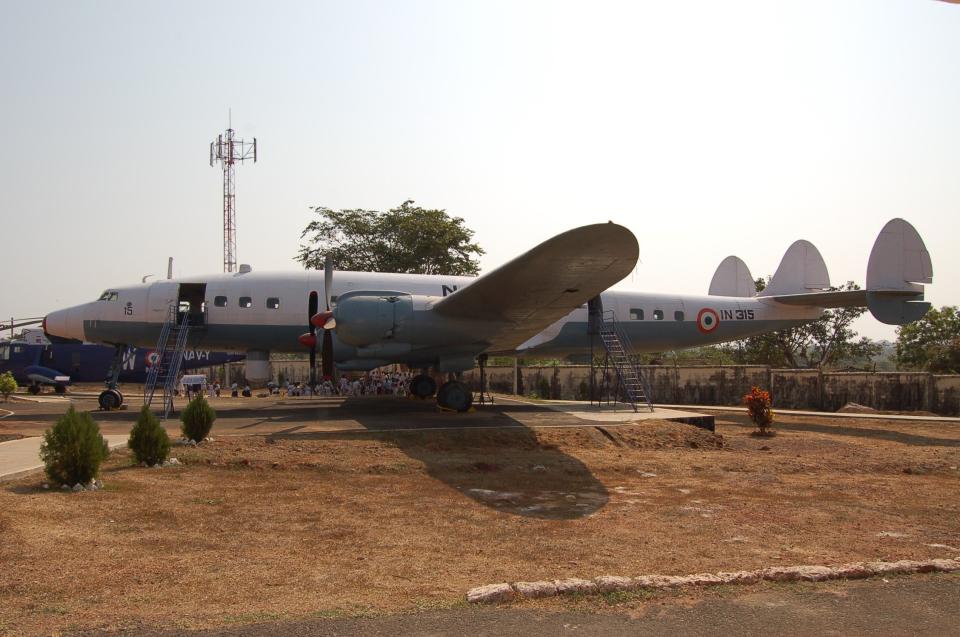
After evaluating the Hawker Siddeley Nimrod, Breguet Atlantique, and Ilyushin Il-38 (Western reporting name May), the Navy decided on the Soviet aircraft as it would be cheapest to acquire and quickest to enter service, being drawn from Soviet Navy stocks. The first Indian Navy crews headed to Riga for conversion training in 1976, and three Il-38s were formally inducted into service with the newly commissioned INAS 315 “Winged Stallions” at Goa on October 1, 1977. Two more aircraft joined later to bring up the squadron total to five by 1983.
That same year the Navy retired its last Super Connies and went shopping for a replacement. The most obvious choice, more Il-38s, was off the table because production of the type had ended in 1972, and the Soviet Navy was unwilling to part with more. Instead, Moscow offered the Il-38’s successor, the Tu-142MK (reporting name Bear-F Mod 3). After a short period of negotiation, a contract was signed for eight aircraft in 1985, with deliveries commencing in 1988.


By this time, the Navy’s premier air station, INS Hansa, was home to five fixed-wing units — three patrol squadrons, one jet training unit, and one Sea Harrier squadron to embark aboard its aircraft carriers. Looking to free up room, the Navy decided on a disused World War II airfield at the sleepy east coast hamlet of Arakkonam, as the site for a new airbase. The base was heavily reworked, including what was to become the longest runway in India, at 4,500 meters (nearly 15,000 feet), and was ready for its first tenants by early 1992. In March of that year, the base was commissioned as INS Rajali, and INAS 312 moved across from Goa the following month.
The Il-38’s search radar, magnetic anomaly detector (MAD), torpedoes, and depth charges gave the Indian military their first means to reliably detect, track, and prosecute submarines from the air. Its four Ivchenko AI-20M turboprops produced over 4,225 horsepower each at takeoff, and with a full fuel load of over 33,000 liters (8,718 gallons), the aircraft had an endurance of over 12 hours. Typical time on task though, was around four hours for a mission duration that averaged eight hours.

The standard crew complement (typically Russian in approach) was pilot, co-pilot, flight engineer, first navigator, flight signaler, and two to three sensor operators.
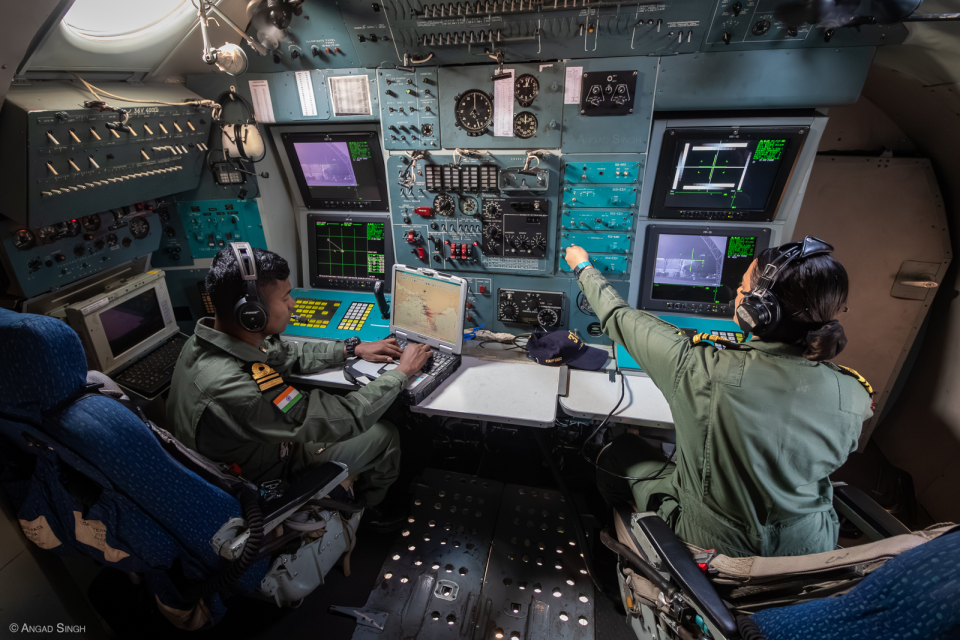
Besides their designated Long-Range Maritime Recon/Anti-Submarine Warfare (LRMR/ASW) role, the Il-38s cooperated with the Indian Air Force in directing anti-ship strikes, initially by Canberras and then supplemented by maritime strike Jaguars.
For search-and-rescue contingencies, INAS 315 provided round-the-clock SAR cover at four hours’ notice, and their aircraft could carry the indigenous air-dropped Rakshak (Guardian) dinghy for rescuing as many as 85 survivors at sea, up to 1,000 nautical miles from base. Starting in April 1990, under project Yaduvansh(named for the first Indian naval aviator, who started out as a World War II Hellcat pilot with the U.K. Royal Navy), the Indian Navy and state-owned aircraft manufacturer Hindustan Aeronautics integrated the BAe Sea Eagle anti-ship missile with the Il-38.
Unlike its older sibling, the Tu-142 never had an operational anti-surface weapon, although the Sea Eagle was trialed several times. It had a different sonobuoy loadout and used the APR-2E torpedo instead of the AT1ME on the Ilyushin. On most other counts, the Tu-142 was broadly comparable in capability to the Il-38. Even endurance aloft was similar, although the Tu-142 did this with three times the amount of fuel feeding its thirsty Kuznetsov NK-12 engines — the most powerful turboprops in history.


Both Soviet patrol types saw extensive use across the length and breadth of the Indian Ocean Region (IOR). Early in its history INAS 315 played a vital role in locating the wreckage of Air India Flight 855, a Boeing 747-200B that crashed into the Arabian Sea off Bombay in January 1978. The squadron went on to conduct search and shadow missions during Operation Pawan, the Indian military intervention in Sri Lanka in the 1980s, while also being credited with detecting the hijacked ship MV Progress Light during Operation Cactus off the Maldives in 1988. Indian Il-38s also flew extensively under Operation Swan to secure the seaward approaches to India’s coastline in the 1990s.
The Tu-142s, inducted a full decade after the Il-38s, flew during various national and international maneuvers through the 1990s, notable among which was the U.S.-India Exercise Malabar in May 1995, which included the USS Pasadena, a Los Angeles class nuclear-powered submarines. INAS 312 was also deployed during the 1999 Kargil conflict as well as the 2002 military standoff with Pakistan. The Tupolevs also saw a lot of anti-piracy action in the 21st century, including a widely publicized operation in aid of a Chinese merchant vessel a few hundred kilometers off the Indian Coast in May 2011. In March 2014, a Tu-142 was one of the first responders to the MH370 SAR effort, although it was soon replaced by a P-8I which deployed to Subang air base in Malaysia for a week before returning home.
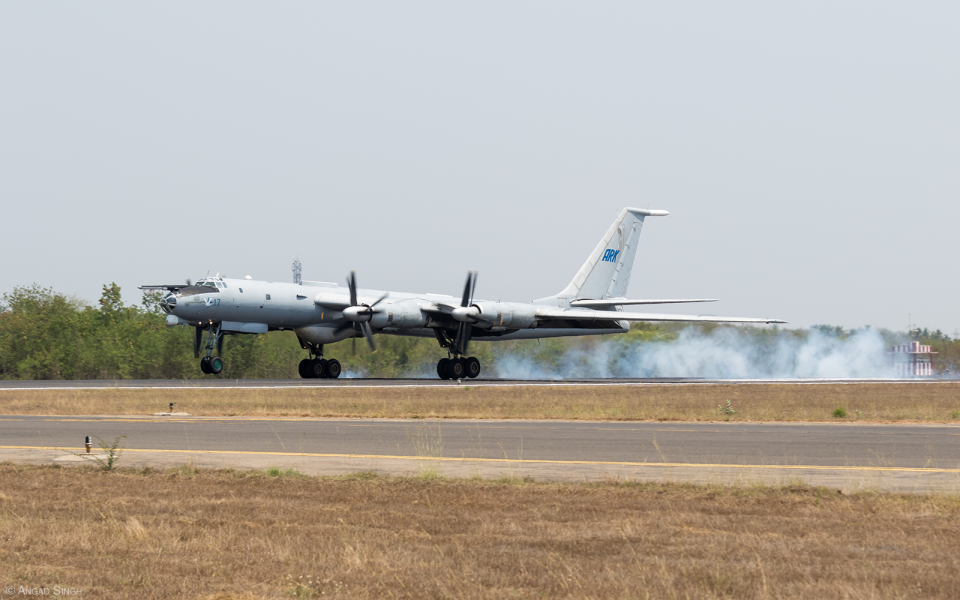

Of course, the bread and butter for these aircraft was ASW, but specific capabilities were seldom detailed in public. Periodic news reports and off-record conversations, however, made clear that both the Ilyushins and Tupolevs regularly detected and tracked submarines entering and exiting the IOR. Sensor performance was apparently extremely high, and all data picked up during patrols was reviewed and analyzed to ensure that information remained updated and relevant.
System upgrades were key to keeping the Soviet types relevant, especially in their final years. The Tupolev fleet received rolling modifications through most of its service, with electronic support measures (ESM) and networking equipment being notable additions from the early 2000s onward.
The Il-38s got a more comprehensive Sea Dragon (SD) update, comprising six new systems — a modern inverse synthetic-aperture radar/synthetic-aperture radar (SAR/ISAR) to replace the legacy Berkut unit, a revamped sonobuoy system, a chin-mounted day/night electro-optical turret, an upgraded MAD, a highly capable ESM fit (the distinctive ‘crown’ atop the aircraft), and a new central computing system to tie all these together.
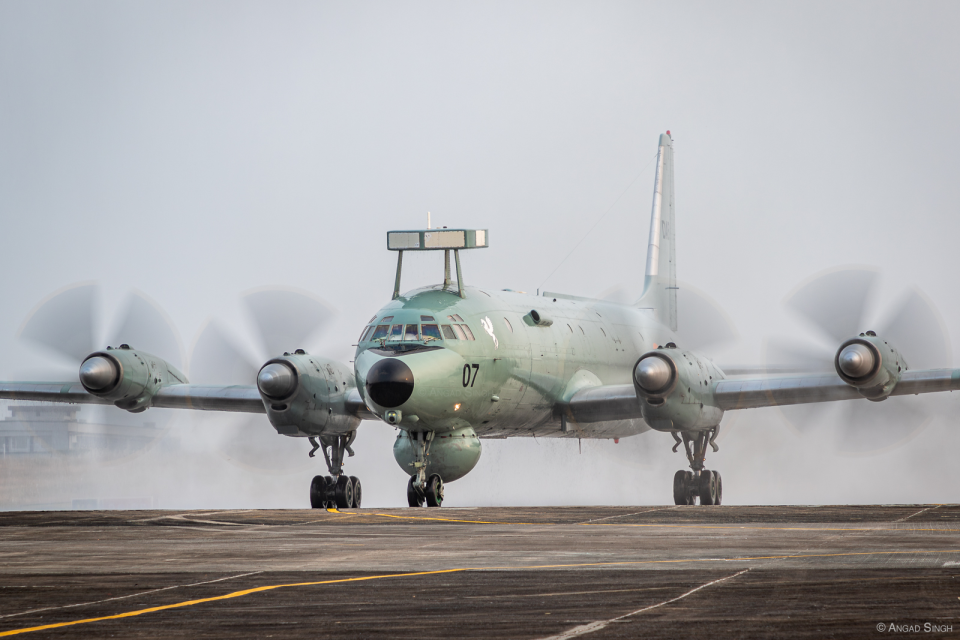
The Il-38SD upgrade also included a comprehensive overhaul and airframe service-life extension, as well as a new anti-ship missile, the Kh-35 (AS-20 Kayak). The first of the upgraded aircraft (serial IN305) flew in 2003, and serial deliveries commenced in 2006. In later years, the Il-38s also received indigenous networking updates and a domestic communications intelligence (COMINT) suite called Sarvadhari.
https://www.twitter.com/ssaratht/status/1634305025324335113?s=20
A unique store added to both aircraft in the mid-2010s was an air-dropped logistics canister that could deliver up to 110 pounds to ships on the high seas. The Il-38s received an improved 331-pound canister in later years, allowing for much greater flexibility.
In addition to Russian and Indian modifications, some updates came from unlikely sources. The most potent of these was an Israeli IAI-Elta surface search radar. First installed on the Navy’s Dornier 228s in 2001, the Tu-142s began getting theirs in 2006, followed by the Il-38s beginning in 2015. Aircrews are unanimous in their approval of the Israeli radar and insist it has more than paid for itself in the short time it has been in use. In fact, so impressive is the performance that the P-8 squadrons are said to be envious — high praise indeed, coming from the operators of the Navy’s latest and most advanced patrol aircraft.
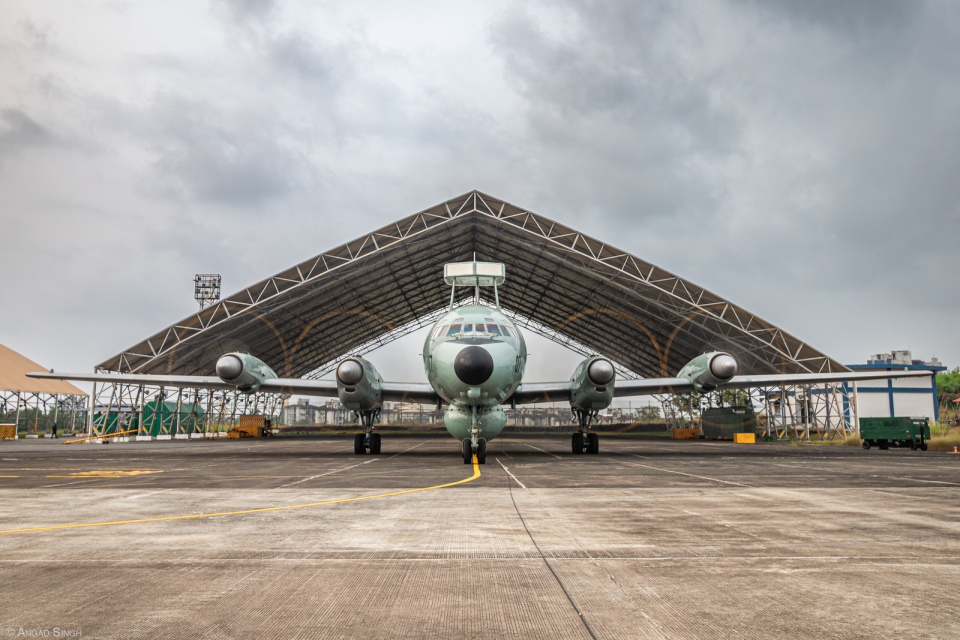
All good things must end, however, and after the Indian Navy’s first P-8I was accepted at INAS 312 in 2013, the writing was on the wall for the aging Russian types. The final Tu-142 overhaul was completed in August 2014 at the Taganrog plant in Russia, following which individual aircraft began to be withdrawn as they hit airframe/engine-hour limits. By late 2016 only two aircraft remained airworthy, and the Navy confirmed that the Tupolevs would be withdrawn after the annual month-long Theater Readiness Operational Exercise (TROPEX) scheduled for January 2017.


With no aircraft lost to attrition since induction, and an impressive safety record of over 30,000 accident-free flying hours since the type’s induction, the Tu-142 drawdown ceremony was a celebratory affair. After the customary flypasts and a water cannon salute for the last flying Tupolev, INAS 312 became an all-Boeing squadron.
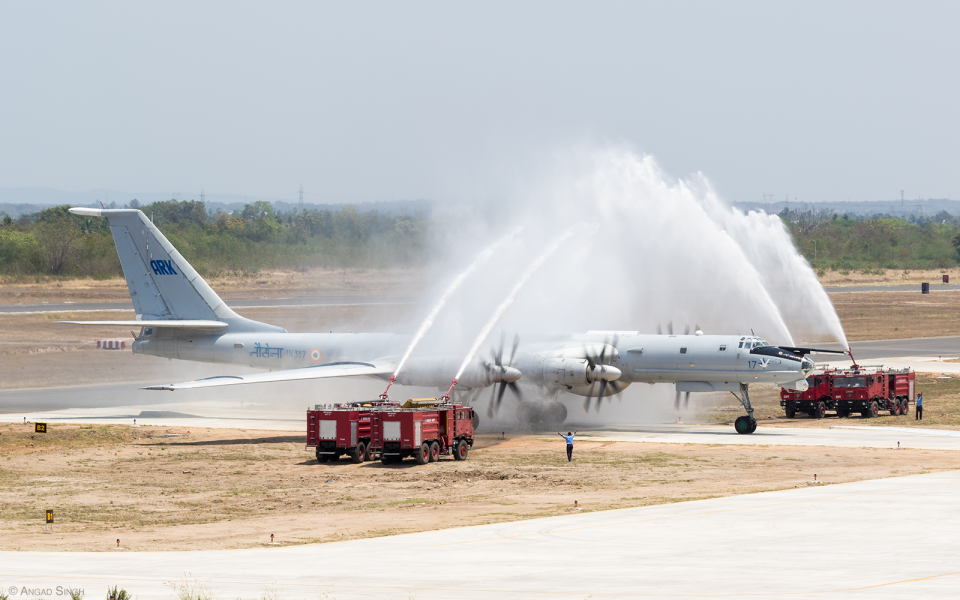
This bought the Il-38s at INAS 315 some breathing space, especially since the P-8I was so much more capable than the Tu-142 and thus able to take on more tasks than its predecessor. Still, keeping the veteran Soviet-era aircraft alive was a challenge, demanding elaborate repairs and checks to operate safely. Eventually, time became the deciding factor, and even though the P-8Is of INAS 316 “Condors” were yet to be delivered, the Navy elected to begin withdrawing the Il-38s as they finished their airframe hours.
Serial IN305, the first upgraded aircraft, was the first to go in December 2018. It was followed by IN303, which was withdrawn in October 2020. IN301, the oldest Il-38 with over 44 years of service in Naval colors, was next to go in January 2022, leaving the unit with two aircraft — the youngest airframes — on the books by October 2023. It was at this point that the author visited INAS 315 at INS Hansa, as he had done with INAS 312 at Rajali back in 2017.

“A candle burns brightest before it is extinguished,” said Cdr Mrinmoy Ghosh, INAS 315’s last CO with the Il-38. He explained that the “Stallions” and their aircraft were at their most potent in the last few years before sunsetting the Il-38. Visiting a squadron weeks before it phases out its aircraft and goes dormant can be a somber affair, but the small band of officers and sailors left on the eve of the retirement ceremony took far too much pride in, and joy from their work to let the looming deadline get them down. Even as they were preparing for the ‘beginning of the end,’ the squadron received and executed operational tasks for the Navy — they carried out a live patrol only a week before IN306 was retired on October 21.
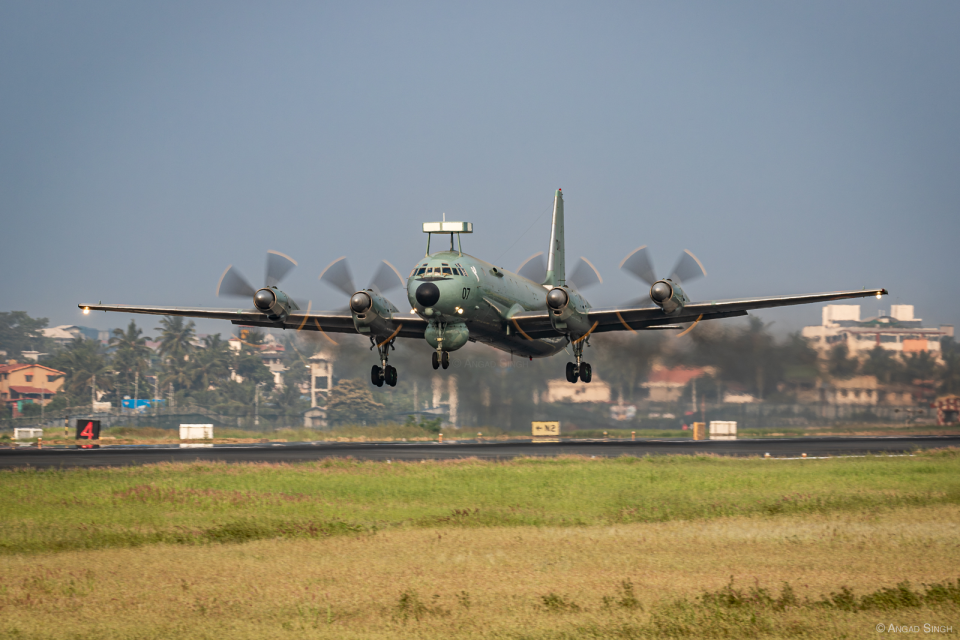
There are stories aplenty — mastery over a difficult aircraft delivers a satisfaction that is readily apparent in conversations at the crew cafeteria. Cdr. Vivek Kumar, the squadron Senior Naval Air Operations officer (NAOO, formerly known as Senior Observer) loves the Il-38. “Each aircraft has its own personality; you have to learn their quirks until they’re like old friends.” That friendship paid off from time to time.
Cdr. Kumar recalled one of his most satisfying moments as a mission when they were shadowing a flotilla, only for the search radar to fail — instead of calling off the mission, the crew adapted on the fly, pressed the weather radar into service, and even with the degraded performance, were able to maintain the track until the sortie ended. “You can only do that when you really understand everything down to the wiring,” he said.

Pilots have similar tales — Cdr. Chandrakant Fulshe, the squadron Senior Pilot (second in command, and ranking pilot when the CO is an NAOO, as was the case at this point), said he “relishes taming an aircraft like this. The multi-crew environment is unlike any other aircraft in the Navy, I am not even in control of my throttle [the flight engineer is]. Every action has to be thought through, multiple steps ahead, and there is constant communication with the crew on intercom. It is definitely a thinking man’s aircraft.”
https://www.youtube.com/watch?v=TTIk2gUGclA
The CO has his own tales to tell. As boss of a patrol squadron, he is proudest when the unit accomplishes tough missions. He would not be drawn on the specifics of the unit’s missions but said sub-hunting brings the most gratification. “It’s like finding a needle in a haystack. The crews and the aircraft are really good at this [ASW], but every time you get a track, the atmosphere on board is electric,” he said with a smile.
But for Cdr. Ghosh and the rest of the squadron, the real high point for morale came in January this year, when the Il-38 joined the enormous Republic Day flypast over New Delhi for the first and last time in the type’s history. Cdr. Fulshe, who was flying IN306 on the day, recalled: “It was our first time flying a formation with the Indian Air Force [the Il-38 was flanked by a pair of Air Force An-32s], first time operating from Jaisalmer, first time with so many aircraft in such a crowded slice of airspace… an unparalleled experience.”
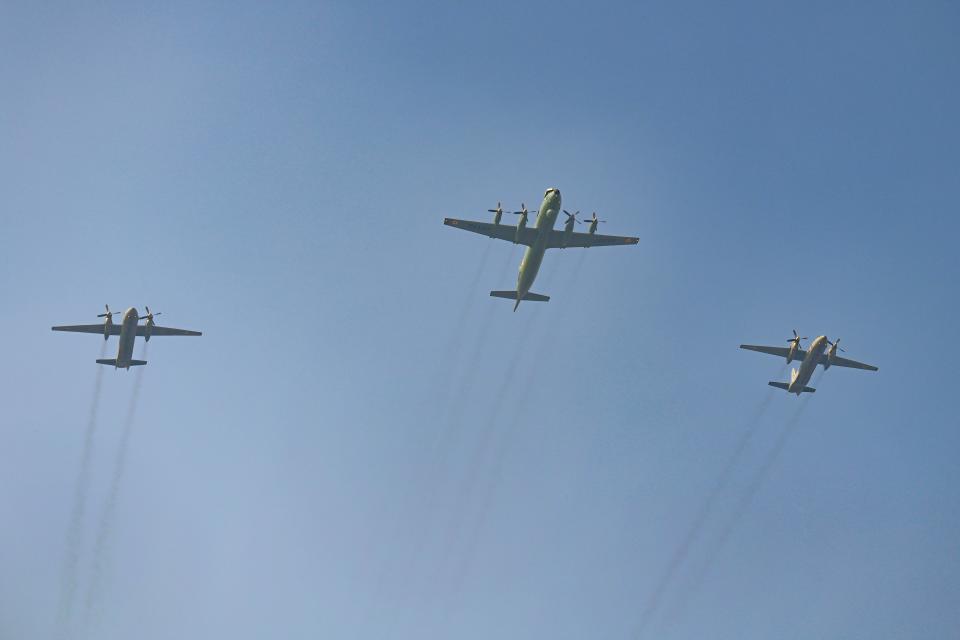
Cdr. Ghosh agreed. “Nothing,” he said emphatically, “can match flying over Kartavya Path [the central avenue of the national capital].”
The Il-38 retirement ceremony on October 31 brought hundreds of officers, sailors, and veterans from the storied history of the squadron together to celebrate their shared bond. Adm. R. Hari Kumar, the Chief of Naval Staff (CNS), presided over the event. Although not an aviator himself, he has commanded several capital ships, including the aircraft carrier INS Viraat. He fondly recalled that “the fleet was always happy when we had an Il-38 above,” explaining that the ‘Stallions’ greatly improved the situational awareness of Indian Navy vessels at sea.
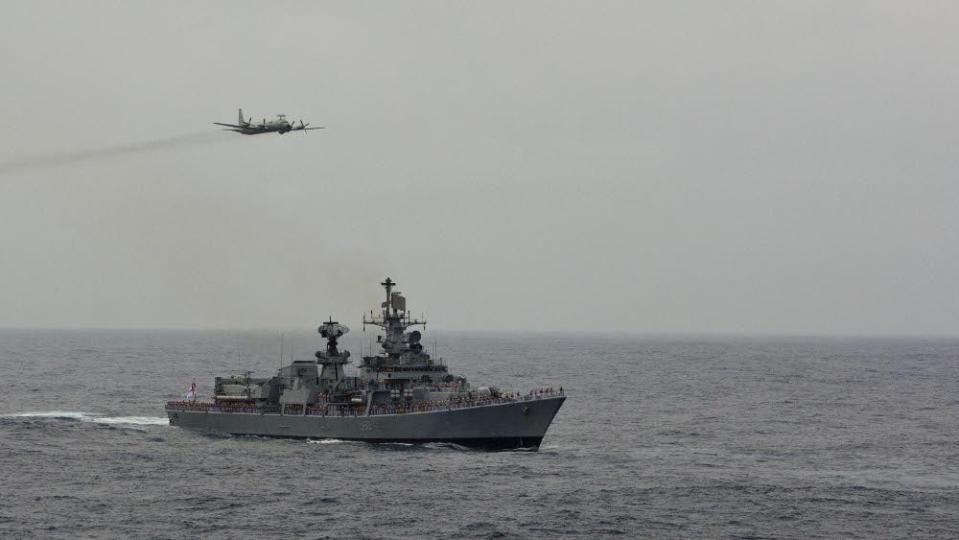
The ceremony saw an aerial tribute to the Il-38 from the aircraft of INS Hansa — first a Dornier 228 from INAS 310 “Cobras,” followed by a MiG-29K from INAS 303 “Black Panthers,” and then a P-8I from INAS 316 “Condors.” Finally, emerging from a literal setting sun over the western horizon, IN307 made an incredibly low pass over the runway, before gently pulling up, leaving the Il-38’s characteristically thick smoke trails hanging in the humid air.

Serial IN307 then made the last-ever Il-38 landing in Indian service, touching down on Runway 08 before coasting to a halt and turning onto the ramp under a water cannon salute. The CNS then greeted the crew as they emerged from the belly of the aircraft, congratulating them on the spirited send-off they had given to a legacy of more than 52,000 operational flying hours over 46 years.
Cdr. Ghosh put the emotion of the evening into words: “Every airframe that has graced our squadron has had a soul. Today, as the propellers of 307 come to the final stop… the souls of these seven sisters pass on to each ‘Stallion’ here. It is now our solemn duty to preserve that soul forever. While we had families to return to after sorties, the aircraft only had us. She eagerly waited for us each day, yearning to play with us over the oceans, achieving missions that often seemed impossible. And with unwavering commitment, she brought us safely back home.”

Postscript
The Indian Navy continues to operate other Soviet/Russian types. Kamov Ka-28 ASW helicopters entered service in 1986 alongside the Rajput class destroyers (modified Kashin class), and are now being upgraded with the IAI Skimmer ASW suite. These were followed in 2003 by Ka-31 airborne early warning helicopters, this time procured alongside Talwar class (Project 11356) frigates. And of course, the sharp end of naval aviation, its carrier-borne fighters, are Russian MiG-29K/KUBs, which were inducted in 2009. These are due to be supplemented in the near future by 26 Dassault Rafale Ms, and in the long term are intended to be replaced by a domestic carrier fighter, currently under development as the Twin-Engine Deck-Based Fighter (TEDBF).

The author would like to thank the men and women of INAS 315 not only for their patience during a busy time, but their enthusiasm, warmth, and hospitality during his visit.
Contact the editor: thomas@thedrive.com

